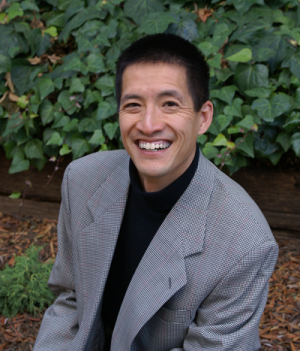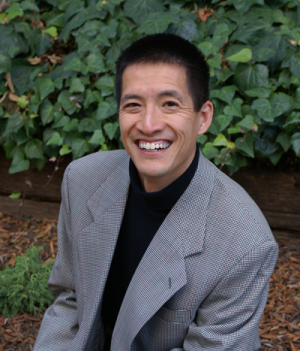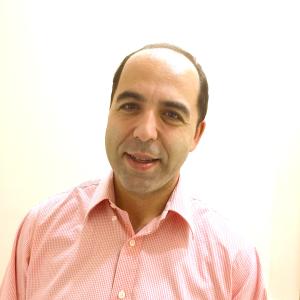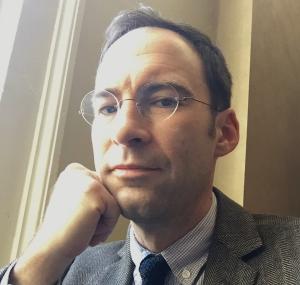Blogs

Those of us who spend our leisure time watching the Tennis Channel are guaranteed to have seen numerous episodes of the marketing promotion called, “Bag Check,” where the top players reveal, one item at a time, what they carry in their huge “clearly labeled” tennis bags. Even though we realize that we are marketing targets, there is something very compelling about analyzing the contents of the bags of these remarkable athletes, and seeing and hearing about what they have decided they wanted access to when they are out on the court during these high-stakes matches toward which they have invested so much of their time and energy. Anybody who has seen me on the court is likely to have very little interest in the contents of my tennis bag, but, as a teacher, this image came back to me as I read several essays written about education and pedagogy in the 1980s and the 1990s, by noted scholar of religion, Jonathan Z. Smith, in which he talked about his practice of spending time in all of his introductory courses to “unpack” his syllabi. Before getting into each major part or section of a course, Smith would explain to his students what, among various options, he chose to focus on, as well as why he made those choices. According to Smith, he did so to show students that a syllabus is always already a constructed argument; talking about how and why he constructed his course in class offered students an (additional) occasion to reflect on how certain judgments were made and how those very judgments might lead to particular implications or consequences. There was, for Smith, also a larger context for this practice. The introductory courses he was describing were all taught to undergraduates. Smith was transparent in explaining that these introductory courses of his were so-called “service” courses. That is to say, students who took these courses usually took them to satisfy their general distribution requirements; they were not taking them as majors in the study of religion. (Even in the early 1990s and at the University of Chicago, the number of religious studies majors was already rather small.) As a result, Smith came to the realization that teaching students disciplinary content and disciplinary methods of religious studies should not be his primary goal. Instead, he aimed to use these introductory “service courses” to help students think and talk about interpretation and argumentation. In other words, whatever content he chose to address in his introductory courses, including his explanation of his syllabus, functioned primarily as case studies to illustrate the reality of multiple interpretations and hence the inevitability of argumentation and adjudication. Why? Because as a literary scholar, Gerald Graff, has argued in his 2003 book, Clueless in Academe, learning to perform, engage, and analyze argumentation is what the academy and education should be all about. Smith went on to suggest that as a teacher, he would not mind if his students did not remember much about the content of his “service courses”; what Smith wanted from his students in these courses was for them to learn and develop the capacity to interpret and argue, as well as the ability to evaluate different interpretations and argumentations. In fact, since most doctoral students in the study of religion end up teaching introductory courses to undergraduates, Smith proposed that doctoral programs in religion should require every student to submit a syllabus with a written rationale for every element that had been included in the course design. (For the same reason, Smith would also like to see more faculty members who supervise doctoral students in religion participate in, rather than being “protected” or “relieved” from, teaching undergraduate introductory courses.) Since moving three years ago to join the Religious Studies Department of a Jesuit liberal arts college, I have found a new and deepened appreciation for many of Smith’s insights. Like most religious studies departments in colleges and universities, mine is mainly a so-called service department, so my courses, especially my introductory New Testament course, are seldom filled with religious studies majors. While a number of them may have chosen to take a New Testament course because of their Christian upbringing, some are also enrolling simply because they have to do a class on religion and mine happens to fit their schedule. For the reasons Smith articulated, I have also changed my introductory New Testament course to focus less on disciplinary content and more on honing students’ interpreting and argument-making skills. My “unpacking” of the syllabus, however, has so far been limited to the first class session of a semester and involves a quick rundown of what we will do and what I will require, but I have never taken the time to acknowledge and to explain—that is, to argue—why we should do what we do and why I should require what I require. Looking back, this is rather lamentable, as I know, even when I was teaching graduate students in a seminary, that scrambling to cover every New Testament book or letter in a semester-long “introduction” (i.e., in approximately 40 hours) would be pedagogically helpful neither to me nor my students. I like the idea of disclosing my deliberations about the materials we will engage, and the approaches we will take with that material right at the outset of the class, not just as a matter of routine housekeeping, but as an example and exercise of the kind of thinking and learning that will follow throughout the semester. Doing so can display the complexity, the difficulty, and the responsibility of making informed but interpretive decisions of what to include and exclude, what to adopt and what to abandon in a world that seldom has neat and clean “answers.” Perhaps it is time also for you to do a bag check: What’s in your bag?

The up-tick of media covered violence in the USA, as well as the reports of violence from around the world, causes me to pause. While I believe that experiencing the pain, suffering, and uncertainty of the world is calling us to become a nation of compassion, forgiveness, respect and equity, I am also afraid. The Golden Rule or the rule of reciprocity is pursuing us with gusto and I am fatigued. The survival of the planet depends on our willingness to examine ourselves and change. It is mid-summer, and my attentions have turned toward preparing for fall and spring courses. Given the backdrop of terrorism and violence in the world – I feel tentative and uprooted. It is easy to slip into the narrative of “an eye for an eye.” Or fall down the slippery slope of thinking that the suffering of some “expendable” populations is acceptable if others can live well as a result- just collateral damage for the greater cause of democratized capitalism. The anxiety in the nation is palpable. The media identifies the acts of violence and hatred by their geographic locations; Nice, France; Orlando; Charlotte; Ferguson (to name a scant few). We are reeling from news coverage which includes cell phone videos of neighbors and family members who are shot, mauled, assaulted, maimed and murdered. Conversations are polarized about police corruption and arrogance. Colleagues, friends, and politicians are writing public letters in response; public manifestos in protest; public statements of dismay and clarion calls for change. I am appreciative that each literary piece is like a musical note in the score for a new symphony of resistance. In the straining for meaning – comparisons are drawn. Grasping for perspective, people are comparing this 2016 era of violence to the civil rights movement. People are harkening back to the days of blatant assassinations: JFK – 1963, Malcolm X – 1965, King – 1968, Bobby Kennedy – 1968. Others are saying that the flagrant violence dappling the nation is a-day-in-the-life for our brothers and sisters in Israel – or is the everydayness for our brothers and sisters in Beirut and Iraq and Afghanistan. Some people liken the current national violence of 2016 to nights in Watts or Camden or Chicago or Detroit – where nightly gun violence and murder is normal, routine, customary - terrorizing. They use the words of Malcolm X, “… the chickens have come home to roost,” as prophetic finger wagging. The mainstream news routinely including a person who is professing that terrorist attacks cannot change our (U.S.) way of life! The person, usually a white, middle aged, man, proclaims that we must live our lives, keep our habits, and not “let the terrorists win!” I suspect my definition of “terrorists” is more expansive than his. My 88-year-old father now refuses to attend the Saturday matinee for fear of being shot. The most piercing uproar and outcry is for - what to do. Thankfully, the counter-narrative is coming on strong. Organizations like #blacklivesmatter and the Samuel Proctor Conference, led by Dr. Iva Carruthers, are diligently, systemically, and effectively working on the issues of violence, corruption and white supremacy in thoughtful, strategic and transformative ways. These organizations are calling us to empathy, compassion, and justice so we all might live and our babies yet-to-be-born might know safety. As a Drew faculty person, I am thankful for Drew graduates who are on the front lines of the 2016 fight, the 2016 journey toward compassion. An exemplar from Drew is the Rev. Dr. William Barber, II, the President of the North Carolina State Conference of the NAACP and the National NAACP Chair of the Legislative Political Action Committee. When I think of Bill and his tireless work I know I do not teach in vain. Bill’s activism and public theology is shaped, not in spite of his theological education, but by his theological education. With discipline and faith, I tell myself to gather myself – I have to, with intention, keep myself grounded. I force myself to stretch beyond myself. My impulse, like so many of us, given the events of violence across the world, is TO DO SOMETHING! When I quiet myself and take a breath I re-purpose myself to commit to teach as a service of justice. I am convinced we must marshal our smartnesses/our best minds, our most creative spirits, our best innovators to solve the problems of violence, racism, militarism – which, if unchecked, will kill us. My fears are allayed when I think of gathering with my students in the fall semester. Embedded in my course content (explicitly or implicitly) is my yearning for them to be change agents. I believe to teach well is to instill in students the ability to discern work which is meaningful, work which is transformative, work which yields compassion and empathy for the stranger. I am looking forward to challenging my students to exercise and hone their abilities to think deeply, to think imaginatively, and to think with their hearts about new ways of being in the world. The world will become more compassionate when we teach and learn that we all are God’s children – no exceptions. Obscure classrooms in seminaries are full of people who will partner with and collaborate with Bill Barber and the others. My job is to train folks in such a way that they are not seduced nor intoxicated by the trivial, and who can engage the deeper issues of alienation, xenophobia, and hatred which are our plague. The old moorings are gone and the new ones are wrenching and cricking into existence. My job is to assist my students in doing work that is worth doing – the work of justice and compassion.

Theological school deans are not just theological leaders for their institution, they must be EDUCATIONAL leaders. That is, they must implement sound educational practices related to curriculum, instruction, supervision, assessment, and administration. There is a variety of ways to assess the effectiveness of the curriculum, and there are several levels of assessment (program-level, course-level, student testing, student projects, etc.). While faculty members can focus on course-level and individual student learning assessment, academic deans need to focus on program-level assessment in order to evaluate the effectiveness of the school's curricular course of study. Here are ten basic curriculum assessment tools every academic dean needs, nine are covered in previous posts: Outcomes alignment worksheet Syllabus assessment worksheet Curriculum maps Program-level rubrics Alumni survey Grade Distribution report Program retention and completion rate worksheets Entering student profile Graduating class profile Student course evaluations In this final entry of the series we review: 10. Student course evaluations that are worth the trouble Student course evaluations, a form of indirect assessment, can be a meaningful component of a school's formative assessment of its curriculum. Unfortunately, most course evaluation tools do not provide sufficiently meaningful data to be helpful. One evidence may be how difficult it is for most schools to collect meaningful data from the evaluations. Another is how students tend to see them as a chore, resulting in cursory responses and a low rate of return. Further, in most cases, the data collected rarely is analyzed at depth or used to prompt pedagogical actions for improvement in teaching and learning. Two approaches can help make course evaluations worth the trouble for students and for deans. First, a better-designed course evaluation tool, and second, a procedure that helps ensure a higher response rate. 1. A well-designed student course evaluation tool An effective student course evaluation tool will provide data and feedback that is meaningful. That is, the information from student feedback should address issues of pedagogy that are relevant, measurable, and actionable. For example, the mythical Central Generic Theological Seminary gathers the following clusters of information on its student course evaluations: (1) Student profile information (2) Feedback on program-level goals (3) Feedback on instruction and pedagogy (4) Feedback on instructor effectiveness (5) Feedback on the relevance of the course to the practice of ministry (6) Feedback on program and learning integration. In order to make these clusters meaningful, the instrument focuses on instructional effectiveness and curricular program goals, not on what students "like" or "enjoyed." Additionally, the clusters of items are co-factored to yield meaningful interpretation. See the attached "Anatomy of a Student Course Evaluation Tool" which shows how the instrument is structured by clusters and for co-factor analysis. Download Anatomy of student evaluation Once the student evaluations are collected (CGTS uses its learning management system (LMS) for its course evaluations) the dean prepares an aggregate report for the Faculty. The aggregate report includes a comparison of selected items over the course of several semesters. The comparison focuses on areas targeted for improvement based on the student evaluations. Here are some examples: In Example 1 the dean compares student responses to degree program goal 1.A across two semesters. Additionally, the report compares two related items by gender. In Example 2 the dean highlights three instructional items related to coursework (knowledge, principles, skills) and compares the responses over three semesters. This report item shows improvement in the most recent semester indicating that the interventions faculty members applied in their courses to address these issues are having a positive effect. In Example 3 the dean compares a cluster of items related to instruction over three semesters. This feedback becomes important for the Faculty of CGTS in helping it realize the need to be more overt in applying pedagogical strategies that help students be more aware of the course learning objectives and to create learning experiences that yield a higher response from students about achieving the course outcomes. As a result of this feedback, the dean led the Faculty in applying teaching and learning practices to increase the effectiveness of these items. You can download a copy of the student course assessment questionnaire here 2. A rigorous procedure for assessment The second strategy employed by CGTS is the implementation of policies and procedures that help ensure a high rate of return on student course evaluations. The school's policy makes completion of the student course evaluation part of the course completion requirements. Students who do not complete the course evaluation do not receive a grade for the course. Additionally, the school has put in place the procedures to help ensure this indirect assessment data set is part of the formative assessment plan. A Student Course Evaluation Sample Here is a sample of student course evaluation questions with questions that cover the various clusters for co-factor analysis. Download Student Course Evaluation sample

Cláudio Carvalhaes Associate Professor McCormick Theological Seminary In Brazil We who believe in freedom cannot rest We who believe in freedom cannot rest until it comes. (1) We have had a month of intense events in the US. The killings of Black precious people, this time, Philando Castile and Alton...

Joshua Canzona Georgetown University When I was teaching public high school, a colleague in the history department approached me to express his concern about our world religions curriculum. “I am scared to touch it,” he said. What he meant, first of all, was that he felt unprepared to teach about..

Tat-siong Benny Liew Class of 1956 Professor in New Testament Studies College of the Holy Cross At the Annual Meeting of the Society of Biblical Literature last year, the Student Advisory Board organized an interesting session titled, “What I’m Telling My Students.” I find this a wonderful question for every

Eren Tasar Assistant Professor University of North Carolina at Chapel Hill As a trend in twentieth-century world history, decolonization is a major topic in any class dealing with modern Muslim societies. This mundane fact comes as a surprise to some of my students, however, for reasons that I can illustrate.

Nancy Lynne Westfield Associate Professor of Religious Education Drew Theological School It is a challenge to do what you teach. “If you know these things happy are ye if you do them.” (John 13:17, King James Version – or the version of my childhood bible study) - my grandfather’s favorite.

Caleb Elfenbein Assistant Professor Grinnell College The core learning goal of my introduction to Islam is that “Islam” is not a thing. Islam does not say anything. Islam does not do anything. Islam holds no power over anyone. Given the incredible diversity across time and space that marks the practices

Cláudio Carvalhaes Associate Professor McCormick Theological Seminary In Brazil There has been a recent uprising of students fighting for justice and better education. Several political developments have spurred the revolt of fourteen- to seventeen-year-old students in defiance of arbitrary laws of governors. Let me mention four events. First, it was
Categories
Write for us
We invite friends and colleagues of the Wabash Center from across North America to contribute periodic blog posts for one of our several blog series.
Contact:
Donald Quist
quistd@wabash.edu
Educational Design Manager, Wabash Center
Most Popular

Are You Okay?
Posted by Nancy Lynne Westfield, Ph.D. on October 1, 2025

On Plagiarism and Feeling Betrayed
Posted by Katherine Turpin on October 27, 2025

Embracing the Imposter Within
Posted by Fred Glennon on September 15, 2025

A Teachable Moment Missed?
Posted by Fred Glennon on October 20, 2025

Analog Versions of Digital Classrooms
Posted by Samantha Miller on October 8, 2025